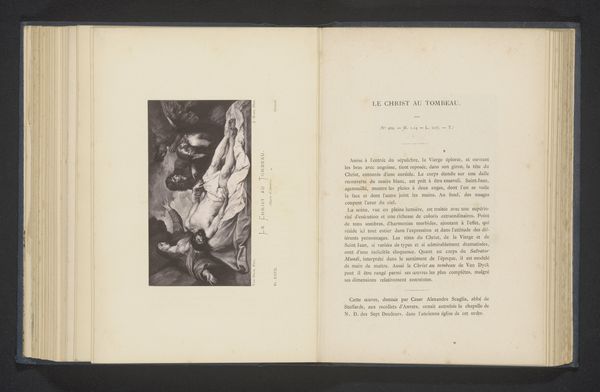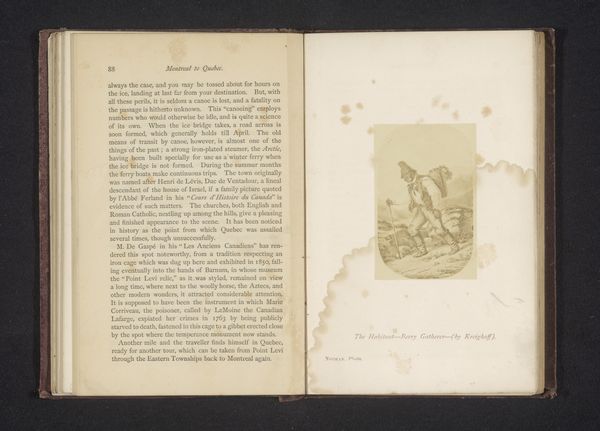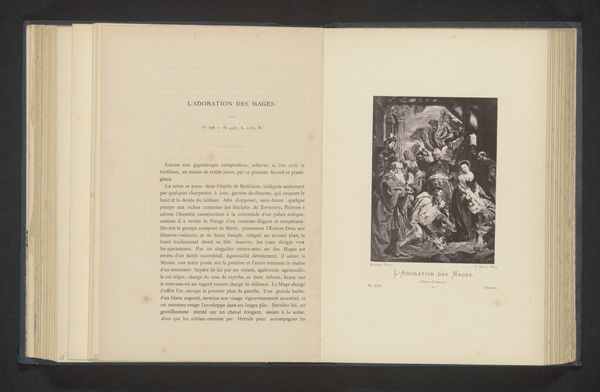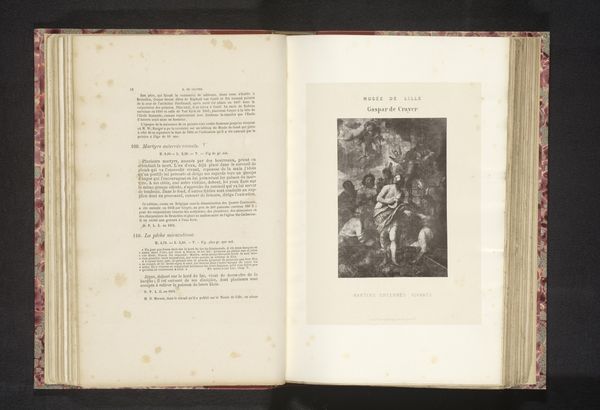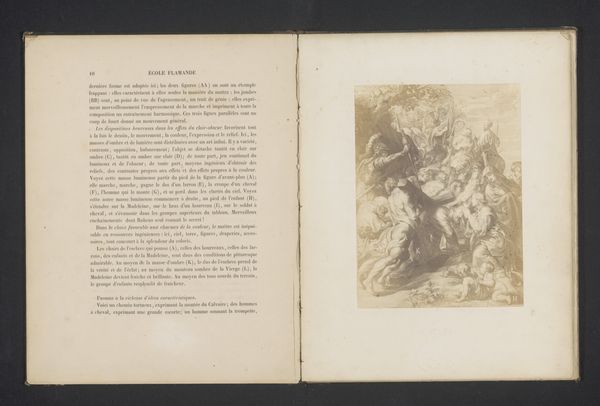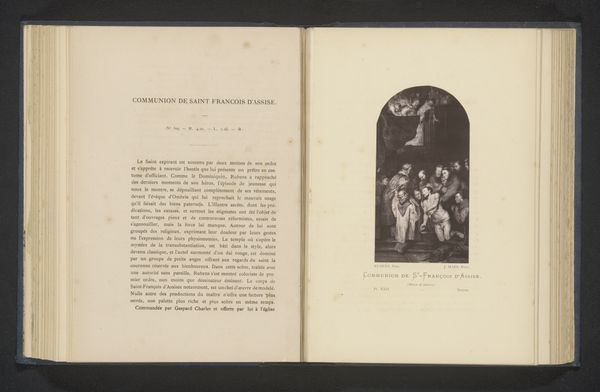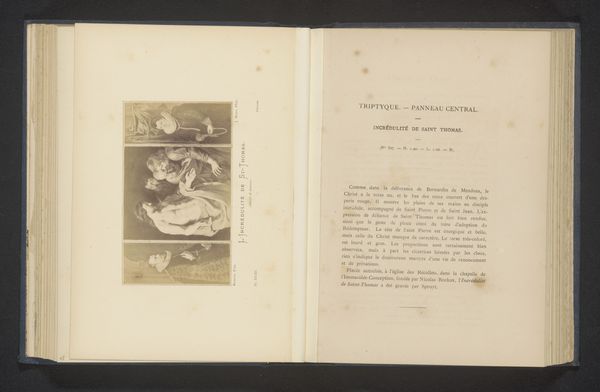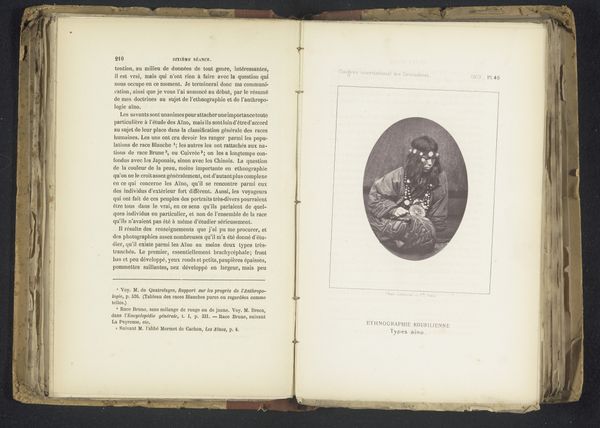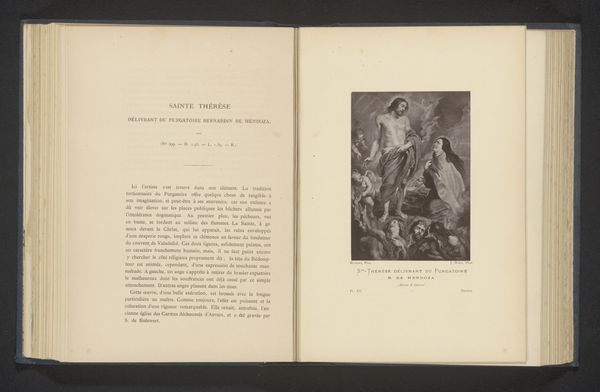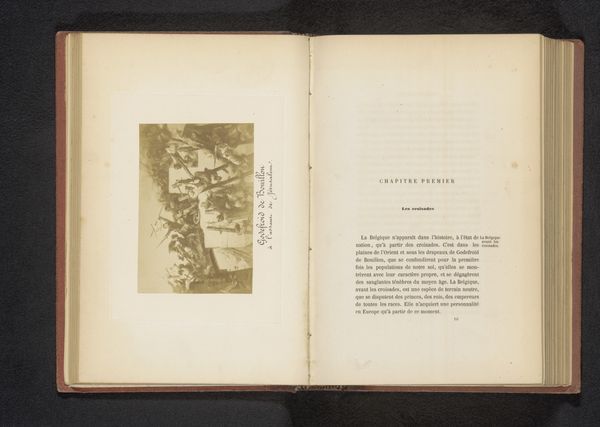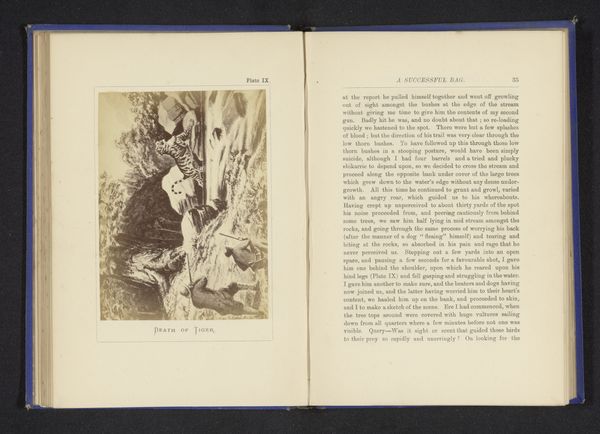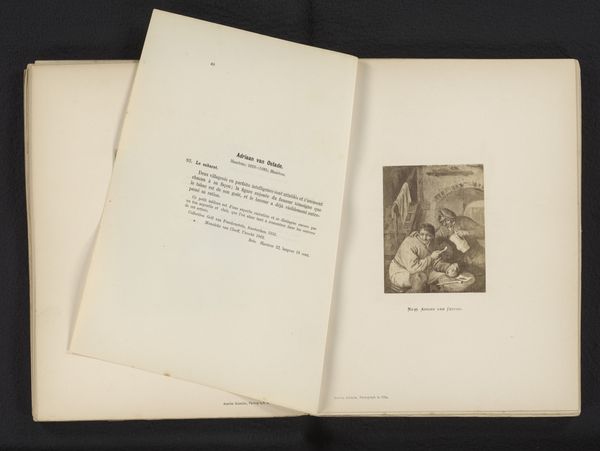
Reproductie van De inwoners van Antwerpen retourneren aan de heilige Norbert de monstrans en andere heilige foedralen door Cornelis de Vos before 1877
0:00
0:00
Dimensions: height 69 mm, width 113 mm
Copyright: Rijks Museum: Open Domain
Curator: This engraving reproduces Cornelis de Vos’s painting "The Inhabitants of Antwerp Returning the Monstrance and Other Sacred Vessels to Saint Norbert." It's thought to predate 1877, and exemplifies Baroque artistry through the print medium. Editor: There's a sense of dynamic action here. The figures are crowded together, leaning towards the central figure. It’s a dramatic moment captured in monochrome. Curator: Absolutely. The use of engraving on paper allows us to analyze how this narrative was disseminated, reaching a broader audience beyond the original painting’s viewers. Consider the socio-economic implications—prints were far more accessible and, as such, how religious propaganda could find its way to everyday life. Editor: Looking at the source painting through the lens of historical context, this artwork is less about piety, perhaps, and more about re-establishing Catholic authority after iconoclasm, about restoring material order after symbolic violation. Who are the figures prominently displayed, and whose stories remain untold? Curator: Exactly. The print medium democratizes religious iconography to a certain extent, but simultaneously reinforces established hierarchies. Consider the labor invested in each print, the infrastructure required for distribution—it speaks volumes about the political economy of religious messaging at the time. The role of print shops themselves in disseminating cultural values… Editor: I wonder too about the potential audiences: the buyers, owners, the viewers encountering this within the privacy of their homes or perhaps more public spaces. How would this image contribute to a collective understanding of identity and belonging, both in Antwerp and further afield? Curator: Indeed, such pieces reveal the infrastructure required for shaping public perception through images and objects. Looking closely at the lines, the textures created by the engraving tool on the paper... this tells a different story of Baroque consumption, perhaps beyond traditional painting. Editor: Reflecting upon this reproduced image, I am thinking of the complex dance between historical record, art object, and sociopolitical narrative—one we are still deciphering. Curator: Ultimately, tracing the production and dissemination pathways reveals an intricate network of faith, politics, and labor that shaped, and continues to shape, our understanding of history.
Comments
No comments
Be the first to comment and join the conversation on the ultimate creative platform.
